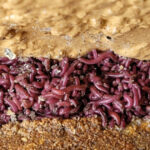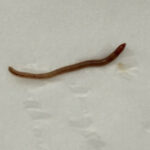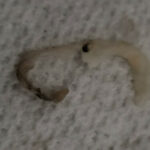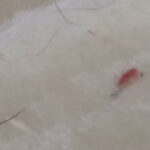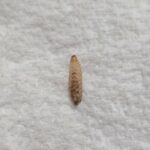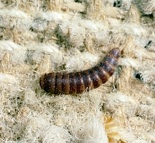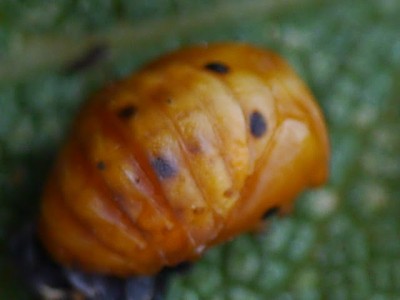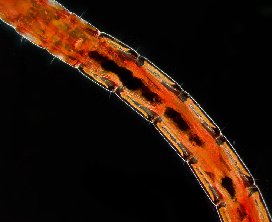
We recently received an email from a reader who found a small and thin red worm crawling on her shower curtain. The reader immediately goes on to say that she is “assuming the worm is a bloodworm,” and we think this is as reasonable of a suggestion as any. The reader planned to remove the small red worm from her curtain after her shower, but by the time she had finished, the bloodworm (sometimes written as “blood worm”) had disappeared. The reader thought that this might mean that the bloodworm “hitch-hiked a ride somewhere on my body,” which led to her question for us: are bloodworms harmful?
As we said, we see no particular reason to think our reader didn’t find a bloodworm, especially given her relative confidence in this suggestion. Moreover, the reader didn’t provide much a physical description of what she found, and she didn’t submit a picture, so we don’t have much information on which to form an alternative hypothesis anyway. And finally, we have written about bloodworms before when writing about small red worms in the shower, the exact topic that currently concerns us. Thus, we’ll assume our reader found bloodworms and answer accordingly.
Before moving on, we should briefly note that bloodworms actually aren’t worms. “Bloodworm” is a fairly broad term that refers to the larval form of various species in the Chironomidae family, composed of nonbiting midges. When certain species in this family are in their larval form, they have a reddish hue, and hence their name. In short, bloodworms are reddish larvae that will grow into nonbiting midges. Here is a nice close-up shot on one:
(Photo Credit: Jasper Nance / CC-BY-SA-3.0)
And now on to our reader’s specific question: are bloodworms dangerous? As far as we can tell, no, at least not in and of themselves, and this the case with most larvae. We have come across no reports of bloodworms biting or otherwise harming humans, and their adult forms don’t bite either. (They are commonly called “nonbiting midges,” after all.) However, the problem with many larvae and other insects, whether they bite or not, is that they can be vectors for disease, and thus it is prudent to avoid them and remove them from one’s house. Obviously, this isn’t to say that coming into contact with any given larvae is going to leave you with some terrible disease, so the reader shouldn’t be alarmed if the larvae had in fact “hitch-hiked a ride” on the her body (which, we should note, might not have happened – the larvae might have just gone down the drain). However, many larvae and insects, including bloodworms and midges, spend time in decidedly unsanitary places, so it is good to steer clear of them (insofar as this is possible). Again, though, bloodworms qua bloodworms shouldn’t present any dangers to humans.
As we conclude, we should briefly mention that bloodworms are to be distinguished from Schistosoma, or “blood flukes,” which are parasitic flatworms that are definitely not harmless to humans. (They cause schistosomiasis, the most socioeconomically devastating parasitic disease after malaria, according to the World Health Organization.) Blood flukes are occasionally referred to as “blood worms,” so we don’t want to make the blanket statement that “blood worms (bloodworms) are basically harmless,” as this is obviously untrue if “blood worm” is being used broadly. However, if by “bloodworm” our reader means the various species of midge larvae that are a reddish color, then they aren’t harmful except to the extent that they are carrying pathogens.
All About Worms is always free, always reader-supported. Your tips via CashApp, Venmo, or Paypal are appreciated! Receipts will come from ISIPP Publishing.
You might also find these guys interesting!





